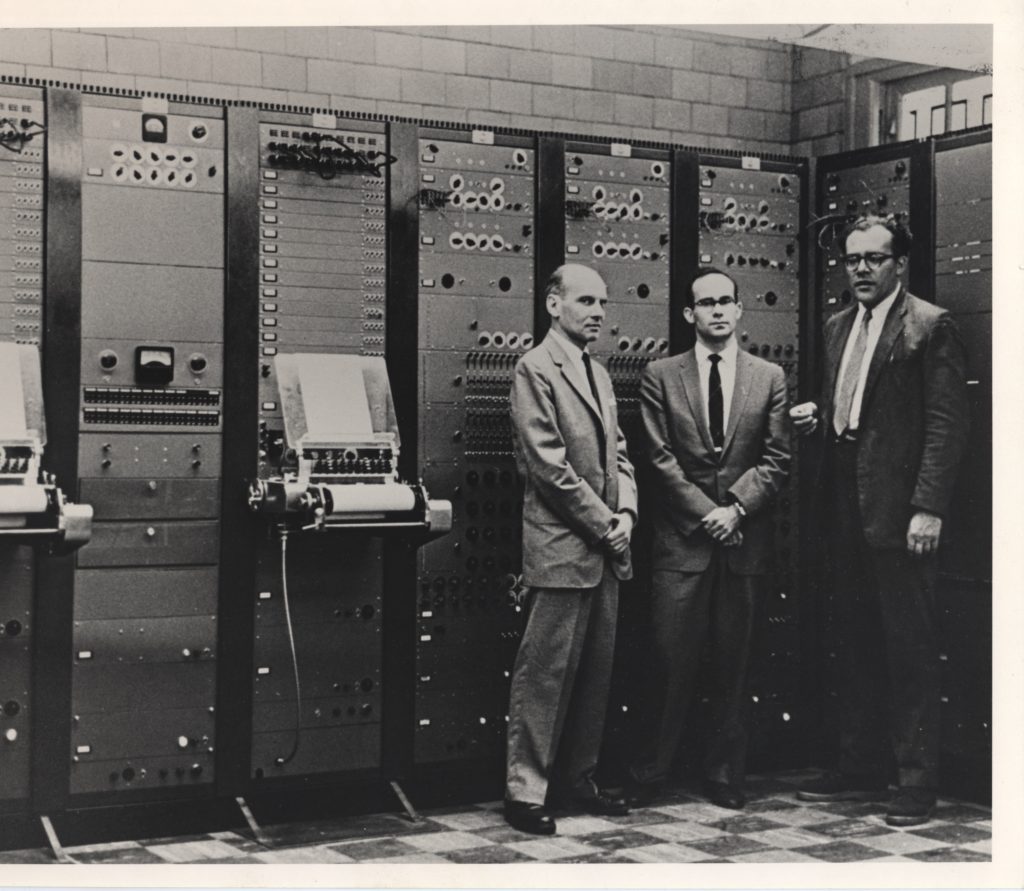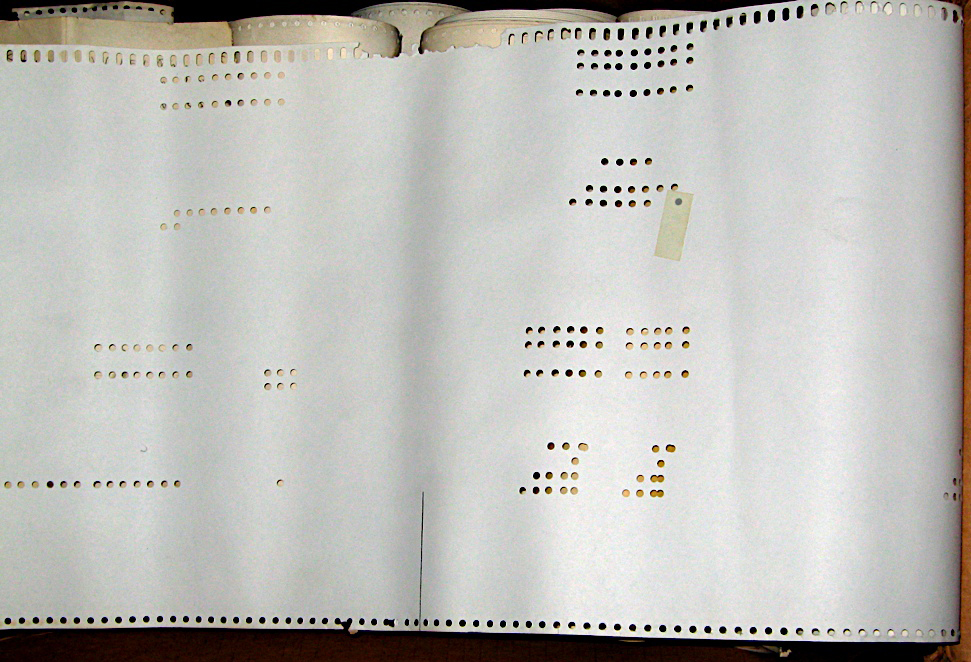In May 2018, Columbia University Libraries was awarded a grant by the GRAMMY Foundation to digitize and preserve 400 hours of unique recordings of early electroacoustic music from the archives of the Columbia-Princeton Electronic Music Center (CPEMC). The content was selected from a collection of over 5,500 reel-to-reel audio tapes, which were deeded to the Libraries in 2009 and transferred out of a storage area in the original Center’s home, on West 125th St. in Prentis Hall.
The resulting Columbia-Princeton Electronic Music Center Collection has now been published to the Libraries’ Digital Libraries Collection catalog (with streaming audio access for full-time affiliates via UNI login.) Bibliographic records for the collection also appear in the Libraries’ online catalog, CLIO, and in WorldCat.
The CPEMC was the first American center for electroacoustic music established in the United States. It was founded in 1959 by Columbia professors Vladimir Ussachevsky and Otto Luening and Princeton professors Milton Babbitt and Roger Sessions as “a center where composers could work and experiment without having to contend with the forces of commercialism” (Otto Luening, in an interview by Robert Moog, in Contemporary Keyboard, May 1981).
Originally concerned with works using the then-new technology of reel-to-reel tape, CPEMC composers soon branched out into all areas of electronic music creation, including the RCA Mark II synthesizer, an important early programmable instrument housed in the Center, and used extensively by Babbitt, and by Charles Wuorinen for his 1970 Pulitzer-Prize-winning work Time’s Encomium.

Luminaries in electronic and avant-garde music who visited, worked, and studied at the Center included not only Columbia and New York City-based composers, but also composers from around the world. Composers who produced work there include Jon Appleton, Bülent Arel, Wendy Carlos, Charles Dodge, Halim El-Dabh, İlhan Mimaroğlu, Mario Davidovsky, Daria Semegen, Alice Shields, Pril Smiley, and Edgard Varèse.
The collection offers insight into an important period in the history of electronic music, particularly in the United States. Along with the audio content, it includes material such as work tapes documenting compositional processes of individual composers. The collection is drawing inquiries and interest from researchers around the world working on individual composers, as well as on the history of electronic music.

A significant amount of material in the physical collection remains to be processed and digitized in future initiatives (including ca. 32 linear feet of paper documents). Inquiries about the collection, including the non-digitized materials, can be directed to musiclibrary@columbia.edu.
The digitization project was accomplished by a cross-divisional team of Libraries staff, drawing on several areas of expertise: Kate Harcourt (project lead; Original & Special Materials Cataloging (OSMC)); Elizabeth Davis and Nick Patterson (curation; Music & Arts Library); Emily Holmes and Jonah Volk (digitization management; Preservation); Russell Merritt and Emily Lavins (cataloging; OSMC); Melanie Wacker and Charlotte Kostelic (metadata coordination; Bibliographic Services); and Violeta Ilik and Dina Sokolova (Digital Library & Scholarly Technologies).
2 thoughts on “Columbia University Libraries Digitizes Columbia-Princeton Electronic Music Center Collection”
Comments are closed.